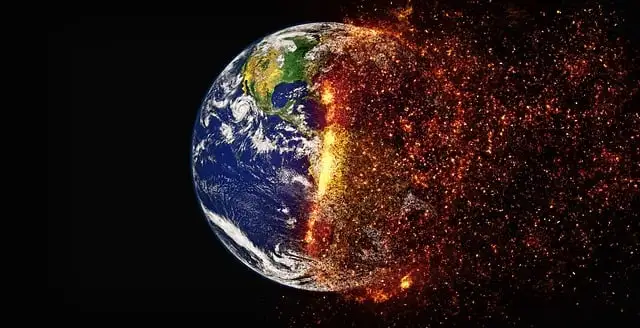DEFINITION
GLOBAL WARMING/CLIMATE CHANGE
Global warming refers to the ongoing rise in the average temperature of the Earth’s atmosphere and oceans. The surface of the earth is surrounded by a layer of air called the atmosphere. The earth receives incoming solar radiation as a source of energy Out of the total radiation, 51 percent is absorbed by the earth’s surface, 14 percent is absorbed by the atmosphere 4 percent is reflected the space by oceans and land, 24 percent is reflected by clouds and 7 percent is absorbed by the atmosphere. If there was no atmosphere the average surface temperature of the earth at ground level would be about 18 degrees Celsius but due to the atmosphere, the average temperature of the earth at ground level is 15 degrees Celsius. The average temperature of the earth has been continuously increasing since the mid-20th century. In the last 100 years, Earth’s average surface temperature increased by about 0.8 °C (1.4 °F) with about two-thirds of the increase occurring over just the last three decades. This temperature is likely to rise a further 1.1 to 6.4 degrees Celsius during the 21st century. Global warming is an overall state of existence that is the cumulative effect of several environmental factors.
CAUSES OF GLOBAL WARMING
Global warming is caused by several factors. The primary cause of global warming is a huge amount of emission of carbon dioxide gas in the atmosphere; for example: 8 billion tons of carbon dioxide entered the air in 2009. Some of the carbon emissions are due to natural causes such as volcanic eruptions, fires in the jungle, and breathing by animals but global warming began due to the emission of carbon dioxide by burning of fossil fuels. In the world 21.3 percent of carbon dioxide emissions are caused by power plants that burn coal, natural gas, and petroleum products, 16.8 percent is the product of industrial processes, 14 percent is emitted by the burning of fossil fuels by vehicles while 11.3 percent of carbon dioxide is emitted during the retrieval and distribution of fossil fuels. Agricultural by-products account for 12.5 percent of carbon dioxide emissions. Residential and commercial buildings produce 10.3 percent whereas land use and biomass burning emit 10 percent and finally waste disposal and treatment generates 3.4 percent of carbon dioxide.
The second major cause of global warming is the release of methane gas. It is released into the atmosphere from various sources, both natural and man-made. Wetlands, the oceans, hydrates, and termites are natural factors whereas landfills, livestock, waste treatment, and biomass burning are man-made factors. The earth can absorb 97 percent of all the methane released in the atmosphere. But the remaining 3 percent is a serious problem. Methane is 20 times more powerful than carbon dioxide to produce the greenhouse effect!
The third main factor causing global warming is the water vapor in the atmosphere. The water vapor absorbs and radiates heat like other molecules in the air. The increase in the temperature raises the level of water vapor in the atmosphere. The warm temperature enables the atmosphere to hold a larger amount of water vapor which traps more heat energy.
Nitrous oxide is the other main cause of the greenhouse effect on Earth. Cars that have catalytic converters, plants that make fertilizer, factories that produce nylon and nitric acid, and even natural sources like oceans and rainforests all release a gas called nitrous oxide. This gas is one of the greenhouse gases which causes global warming. When we release too much nitrous oxide into the air, it traps heat from the sun and makes the Earth’s temperature go up. So, from the above things, we can get the problem of global warming.




